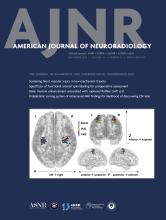This article requires a subscription to view the full text. If you have a subscription you may use the login form below to view the article. Access to this article can also be purchased.
Abstract
BACKGROUND AND PURPOSE: Several nonrandomized studies have demonstrated the effectiveness of balloon guide catheters in treating patients with anterior circulation large-vessel occlusion. However, their impact on the elderly populations has been underreported. We aimed to analyze the effect of balloon guide catheters in a cohort of elderly patients (80 years of age or older) with anterior circulation large-vessel occlusion.
MATERIALS AND METHODS: Consecutive patients from June 2019 to June 2022 were collected from the ROSSETTI Registry. Demographic and clinical data, angiographic endovascular technique, and clinical outcome were compared between balloon guide catheter and non-balloon guide catheter groups. We studied the association between balloon guide catheters and the rate of complete recanalization after a single first-pass effect modified TICI 2c–3, as well as their association with functional independence at 3 months.
RESULTS: A total of 808 patients were included during this period, 465 (57.5%) of whom were treated with balloon guide catheters. Patients treated with balloon guide catheters were older, had more neurologic severity at admission and lower baseline ASPECTS, and were less likely to receive IV fibrinolytics. No differences were observed in terms of the modified first-pass effect between groups (45.8 versus 39.9%, P = .096). In the multivariable regression analysis, balloon guide catheter use was not independently associated with a modified first-pass effect or the final modified TICI 2c–3, or with functional independence at 3 months.
CONCLUSIONS: In our study, balloon guide catheter use during endovascular treatment of anterior circulation large-vessel occlusion in elderly patients did not predict the first-pass effect, near-complete final recanalization, or functional independence at 3 months. Further studies, including randomized clinical trials, are needed to confirm these results.
ABBREVIATIONS:
- BGC
- balloon guide catheter
- ET
- endovascular thrombectomy
- EVT
- endovascular treatment
- GPTFR
- groin puncture to first run
- GTR
- groin puncture to revascularization time
- LVO
- large-vessel occlusion
- mFPE
- modified first-pass effect
- mTICI
- modified TICI
- sICH
- symptomatic intracranial hemorrhage
- © 2023 by American Journal of Neuroradiology











